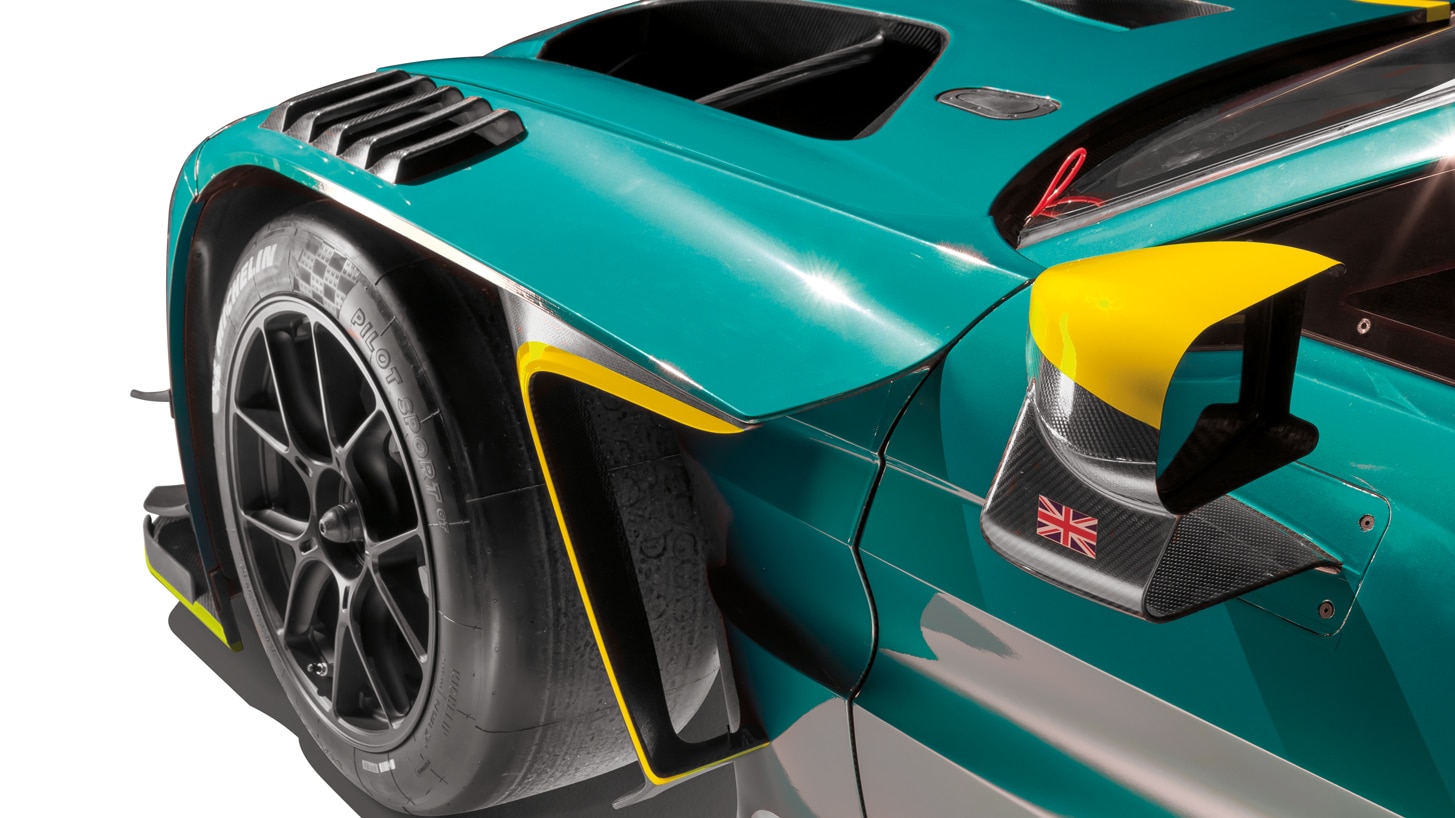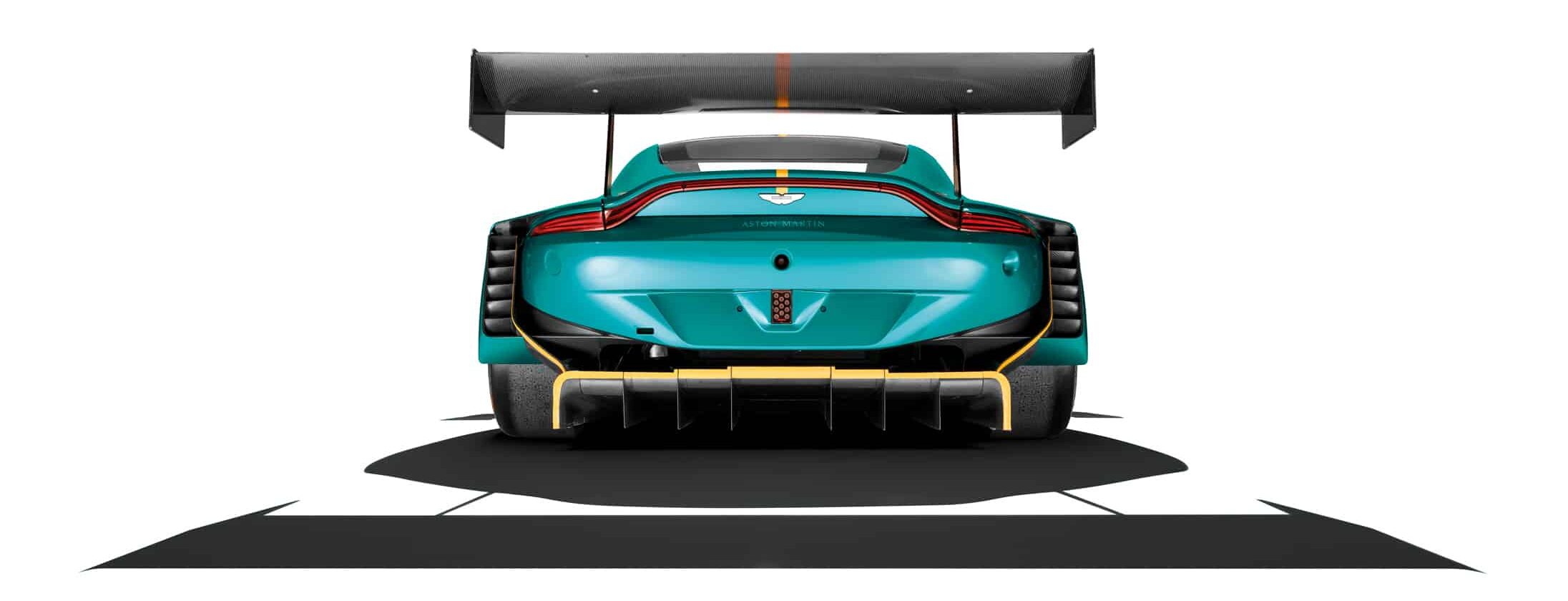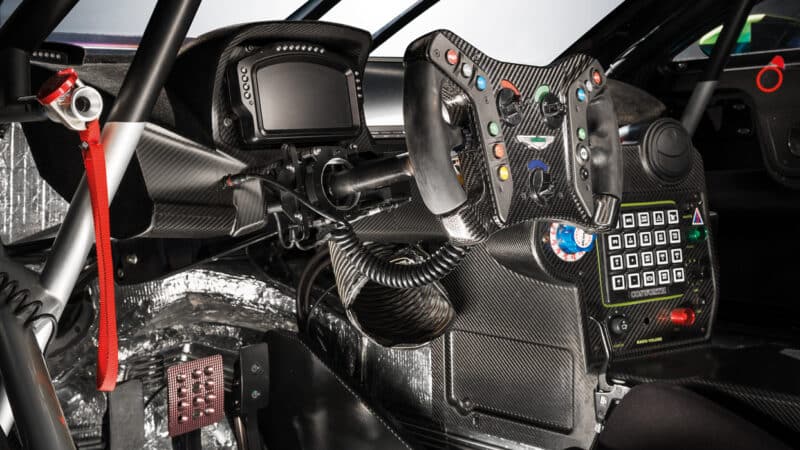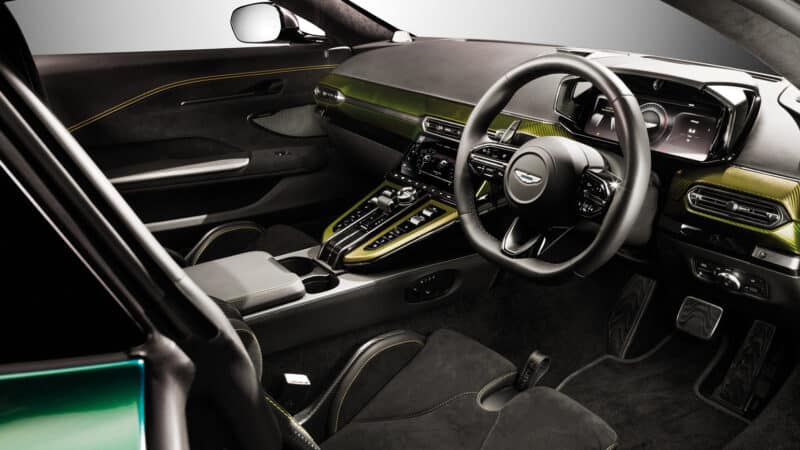Aston Martin Vantage rolls into new GT3 era
Out of the shadows steps Aston Martin’s stunning new Vantage GT3. Damien Smith discovers how the GT3 breed has evolved as it steps up to the world stage and Le Mans for the first time
Jonathan Bushell
What a beast. This is the new Aston Martin Vantage GT3 upon which Britain’s great sports car maker has pinned its hopes for a bountiful season in the super-competitive category, which for the first time is finally embraced as the GT division of the World Endurance Championship and the Le Mans 24 Hours. To the surprise of absolutely no one, the switch to GT3 for 2024 has rejuvenated the WEC’s Grand Touring class, as a glut of manufacturers dive in to jostle for honours.
Aston Martin is, of course, a stalwart of the old LMGTE era in which it claimed 52 wins and 11 world titles between 2012 and ’23. Once again it heads into battle against familiar faces and foes from Ferrari, Porsche and Corvette, but there’s plenty of fresh competition too. Entries representing BMW, Ford, Lexus, McLaren and Lamborghini have taken the LMGT3 bait, meaning the WEC will now boast nine varieties of GT make and concept. The class structure is now simple and split in two: 19 Hypercars and 18 LMGT3s – although the popular LMP2 prototype division will return to bolster the overall grid at Le Mans.

It’s natural that most focus should fall on Hypercar and the battle for overall supremacy, especially as this year Alpine, BMW, Lamborghini and the intriguing Isotta Fraschini join the head-spinning influx to the top tier that already includes Ferrari, Toyota, Porsche, Cadillac and Peugeot. Aston Martin too will join the throng in 2025 with its stunning Valkyrie, which only underlines how sports car racing has surely never had it so good.
But just as it was through the 1960s and ’70s, and since its mid-1990s revival, the Grand Touring category remains the true bedrock of endurance racing. Whatever the state of play in the headline prototype category as entries wax and wane, the GT classes tend to shore up grids and preserve sports car traditions as an accessible form of high-level motor sport for privateer teams and amateur drivers.

That taken-for-granted status was sorely tested in recent years under a GTE rulebook that led to an increasingly sophisticated and expensive breed. That’s why the transition to the vibrant GT3 division is beyond time – and ensures that whatever happens in the aftermath of the current Hypercar explosion, the secondary class for a breed that at least carries a resemblance to exotic cars for the road will provide stability, not to mention a white-hot competitive canvas.
“It’s fair to say we had a big focus before on GTE. Now we want to do the same for GT3”
The WEC and Le Mans adoption of LMGT3 has “massively” raised the stakes as Aston launches its next-generation Vantage. That’s the verdict of Gus Betelli, director of performance at Prodrive-run Aston Martin Racing, the arm responsible for the brand’s customer-focused GT programme. “It’s fair to say we had a big focus before on GTE, because we had to be running a factory team to win a world championship and Le Mans,” he says. “Now we want to do the same for GT3. The focus has shifted to make the GT3 as successful as possible, not only for customers and to sell a lot of cars but also to get the results at the big races.”

The car has been launched in tandem with the new generation of Vantage road car – but while the manufacturer loves to talk about the ‘synergies’ between track and street, the GT3 shares only the model’s renowned 4-litre twin-turbo V8 engine and bonded aluminium chassis underpinnings with its parent. Check out those flared rear arches, the pronounced diffuser, monstrous rear wing and hefty air scoops behind the front wheels… it’s a pure-blood thoroughbred for the race track that represents just how far GT3s have evolved from the original user-friendly concept introduced by GT tsar Stéphane Ratel nearly 20 years ago.
“There are two different angles,” explains Betelli on the new Vantage’s main points of development. “One is driven by the FIA regulations. There are a few changes, mainly on the aerodynamic performance window, so there has been a large development on the bodywork. Some of it in line with the road car but also to comply with the new regulations that has made it more efficient and increased downforce. The car looks more aggressive.” Yes, we’d noticed.
“The second angle is a focus on improving driveability, increasing the performance window. The previous car was good, but it was difficult to get into that peak of performance, especially for customers and amateur drivers. These new-generation GT3s are more dependent than ever on aerodynamic downforce, so we wanted to make the car more stable under braking. The old car would dive a lot on the brakes, so we had to try and control the pitch with the rear suspension set-up. But this meant it was stiff, which made it quite snappy and also overworked the tyres. Working heavily on damper tuning, we have found a much better balance with the new car so we can generate the downforce without compromising the suspension set-up. The big focus was on driveability to make sure the car is good on every circuit, on every tyre and in any conditions.”

Aston Martin’s new head of endurance, Adam Carter, expands on that crucial second point. “As I’ve previously acknowledged and accepted, our GT3 was less favoured in comparison to the GTE and GT4 within the Aston Martin stable. For the new car, very specifically the objective was to have a wider set-up window, to make it more benign. Let’s not forget in GT3 you have various tyre manufacturers as well.”
“It’s in the right window for the aero and every driver who drove it loved it”
Initial signs are that the result of the first collaboration between AMR and the new Aston Martin Performance Technologies division based at the shiny, new Silverstone HQ has hit its marks. The car was first spotted testing in camouflage ‘over the road’ last autumn and since then the process of racking up the miles has included a mammoth 30-hour test. “It’s in the right window for the aero and every driver who drove it loved it,” reports Betelli. “They realised we have a very good package. I’m pleased with it so far.”
Several drivers have said they’ll miss GTE, yet modern GT3 is hardly a case of dumbing down. “The GTE is a little bit more aggressive with no ABS brakes, the aero performance was slightly different and it also had bespoke tyres, which made things a bit more interesting,” says Betelli. “It had more grip and was a true driver’s car, a proper prototype. The GT3 has more compromises on the drivers’ side, because it has ABS and must be able to run on any tyre for any championship around the world. But for the engineers the cars are very similar.”

The 2024 Vantage GT3 – as aggressive on the interior as the exterior…
Jonathan Bushell
The best news might be how the FIA and the ACO plan to counter the negative aspects of Balance of Performance in the new LMGT3 era. Good old BoP. We wouldn’t have the rich diversity of modern GT racing without it, or the Hypercar boom for that matter. But the seeds of doubt it sows about whether this breed of racing is too easily ‘fixed’ has caused so much angst – for every competing manufacturer. “With the ACO and WEC it will be slightly different now because we have torque sensing driveshafts to measure the power,” explains Betelli. “It should take a lot of the BoP noise away.
“All the cars go to the wind tunnel to get a performance level between them, and then the power is measured by the torque meters,” he continues. “Even the refuelling will be worked out on energy usage, very similar to Hypercar. So there shouldn’t be too much BoP talk any more in WEC, and it’s being introduced to IMSA next season. It’s a good step forwards, despite the extra costs to do it. At least we can take that element of BoP out of the equation and everyone can start on a level playing field.” Sounds promising.
AMR will run two cars in the WEC on behalf of customers – so in essence little changes for Betelli’s squad. The No27 Heart of Racing entry, helmed by its pro driver Alex Riberas and bronze-rated team principal Ian James, and the No777 D’station Racing Vantage spearheaded by factory ace Marco Sørenson headlines the 2024 Aston Martin GT3 attack. Beyond the world series, the Vantage will also feature prominently in the GT World Challenge, IMSA’s GT classes (where it has already taken its bow, at Daytona), GT Masters, possibly the DTM and a host of national series.

…which is in stark contrast with the road car Vantage cabin
Jonathan Bushell
“Our aims are to continue on our vein of success across the series and at the blue riband events,” says Carter. “On sales, we have a significantly populated order book. We are on a projection to have in the order of 30 Vantage GT3s sold by the end of 2024, which is a good market share. Our growth in SRO’s GT World Challenge could be in the order of eight cars. That’s a great result for this car already.”
“The new car has convinced a few respected GT specialists to defect”
The new car has already convinced a couple of respected GT specialists to defect. Germany’s Walkenhorst Motorsport, formerly a BMW stalwart, has made the switch, as has the Belgian Comtoyou Racing equipe following Audi’s decision to cut its factory support for GT3 as its F1 ambitions soak up all attention. Meanwhile, Flying Lizard Motorsports, already a Vantage GT4 runner, will now step up to the GT3 in the US.
“We had a customer test at Silverstone and they said, ‘Tick, tick, tick – this is what I want,’” says Carter. “The industry is fickle, but people have got wind that the new GT3 Vantage has this increased set-up window. The news has got out there that the problems have been addressed and people have bought into the programme.”
Time, then, to unleash the beast.
Aston martin vantage GT3
Engine 4-litre V8 twin-turbo
Power 400kW (536bhp)*
Torque 700Nm*
Transmission Xtrac six-speed sequential with semi-automatic paddleshift, rear-wheel drive with traction control
Suspension Double wishbone front and rear, five-way adjustable dampers, adjustable anti-roll bars
Bodywork Removable carbon-fibre panels optimised to GT3/LMGTE regulations, quick-change front end bodywork system, carbon-fibre roof with regulation safety access hatch, full-length flat floor, carbon-fibre splitter and diffuser, adjustable carbon-fibre rear wing
Wheels/tyres Forged aluminium 12.5in x 18in front, forged aluminium 13in x 18in rear, Michelin 30/68 – 18 front, Michelin 31/71 – 18 rear
Dry weight 1265kg
*Variable by boost
Aston martin vantage

Engine 4-litre V8 twin-turbo
Power 489kW (656bhp) @ 6000rpm
Torque 800Nm
Max Speed 202mph
0-60mph 3.4sec
Transmission Rear-mounted eight-speed automatic
Suspension Front: independent double wishbone, coil springs and anti-roll bar; Rear: multi-link suspension, coil springs and anti-roll bar
Wheels/tyres 21in wheels. Michelin Pilot Sport S 5 AML, front: 275/35/ZR21; rear: 325/30/ZR21
Dry weight 1605kg